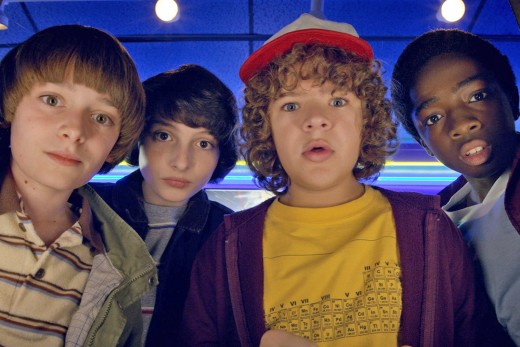Netflix vs Disney+


Reading about the year’s biggest summer theme park draw, Star Wars: At Galaxy’s Edge (opening this weekend!) led to reflections of revenue strategies at two very contrasting corporations. Matthew Ball’s excellent 7-part series explains how and why Netflix continues down a path most other content distributors either don’t get or cannot match. It’s a fascinating story of competitor complacency, grandiose ambition, foresight and chance. WSJ wrote last week about how Netflix vs Blockbuster as a cautionary tale drives frantic deal-making across nearly every industry, underscoring the disruptive might of Netflix and its ilk.
Disney is not immune. That’s why it announced pulling titles from Netflix to launch Disney+, a streaming service, this November. That by itself is not notable. After all, other traditional cable/media have made forays already. What will be more interesting to follow is Disney’s execution chops and ability to leverage both traditional media and new media to gain the competitive edge.
Some argue Netflix has nothing to be afraid of, citing several reasons that drove Netflix’s growth as reasons for insularity. That may be true in the short run. But Disney is playing the multi-year, multi-platform game which Netflix does not have the means to play. For example, Disney+ will not replace Netflix. But Disney+, with Hulu and ESPN OTT at under 30 bucks is a legitimate contender to replace Netflix or Netflix+cable for most households.
Why Netflix is Different
The average American consumes nearly 6 hours of video daily according to Nielsen. Netflix wants to own not only that, but all of the leisure, non-working time. Netflix’s goal of media consumption ubiquity is at odds with most other traditional media companies. Annual content commitment (not amortized spend) is ~$12 B, compared to ~$2.3B at HBO. The focus on subscriber and engagement seems right in line with internet peers than with media corporations like Disney or HBO. Most of Netflix consumption is “treadmill viewing”: passive, addictive, title-bingeing during the train commute or waiting at the kid’s soccer practice (yeah, I see you Dad). It does not rely on appointment-viewing like HBO’s GoT or AMC’s Walking Dead.
What’s Next for Disney and Netflix
The rollout of 5G across the US in 2019 will likely continue the demise of cable as the primary means of household content distribution. That is just an accelerant to an already raging fire of cord-cutting, but one that times well for Disney+ to make a push for OTT. A future with a Disney SVOD bundle is not only possible, it’s almost certain and only timing remains to be answered. With the acquisition of Twentieth Century Fox, Hulu and the recently yanked rights to Disney/Marvel from Netflix, along with aggressive pricing, Disney will impact Netflix where it hurts the most: audience engagement and hours spent, which in turn impacts subscriber growth.
Netflix US growth will likely slow as a result as more begin to evaluate its place in the line-up. Disney will also likely use cross-platform capabilities to drive properties from traditional media, such as simultaneous releases, director’s cuts, fan interactivity and promos to drive engagement and acquisitions.
So What Will Netflix Do?
After all $12B buys a lot of content. Netflix’s Reed Hastings has said content spend will continue, and has recently signed production deals with Ryan Murphy and Shonda Rhimes.
However, it would be surprising if the strategy does not shift to incorporate the new, post-Dinsey + reality for Netflix:
-
Focus on international growth: this has been an area of continued growth helped by a masterful implementation of content localization strategy. Expect more deals with international production studios[MV1] , especially emerging markets Brazil and India where English titles have narrower appeal.
-
Content consolidation: Netflix has famously continued to invest in critical acclaim (to the chagrin of insiders), so there’s no question Reed Hastings, Ted Sarandos and the team want to produce high quality television as much as anyone else. But viewed from the lens of engagement, Netflix continues to churn out Adam Sandler/Kevin James type trash com in large numbers. We should expect, however, further consolidation of titles, cleaning up of poor performers(in hours spent terms) and more spending with big-name producers aimed at drawing app activation as home screen video options proliferate
-
Horizontal expansion: gaming, social, merchandising (Stranger Things Funko Pops and Legos!), spin-offs and series tie-ins will likely begin or grow. Social gaming seems like a logical extension for Netflix. Sports and live events are unlikely.
Netflix famously pledged to continue negative cash flows as it continues to invest in audience growth and ownership. But Disney+ has the best chance yet of any streaming service to draw attention away, even if it doesn’t singularly and fully own online the way Netflix does today. There may be room for both to coexist, but not without reshaping the other in some meaningful way. It’s a David v Goliath turned David battle and the ultimate prize is our time.
Either way, audiences win.










